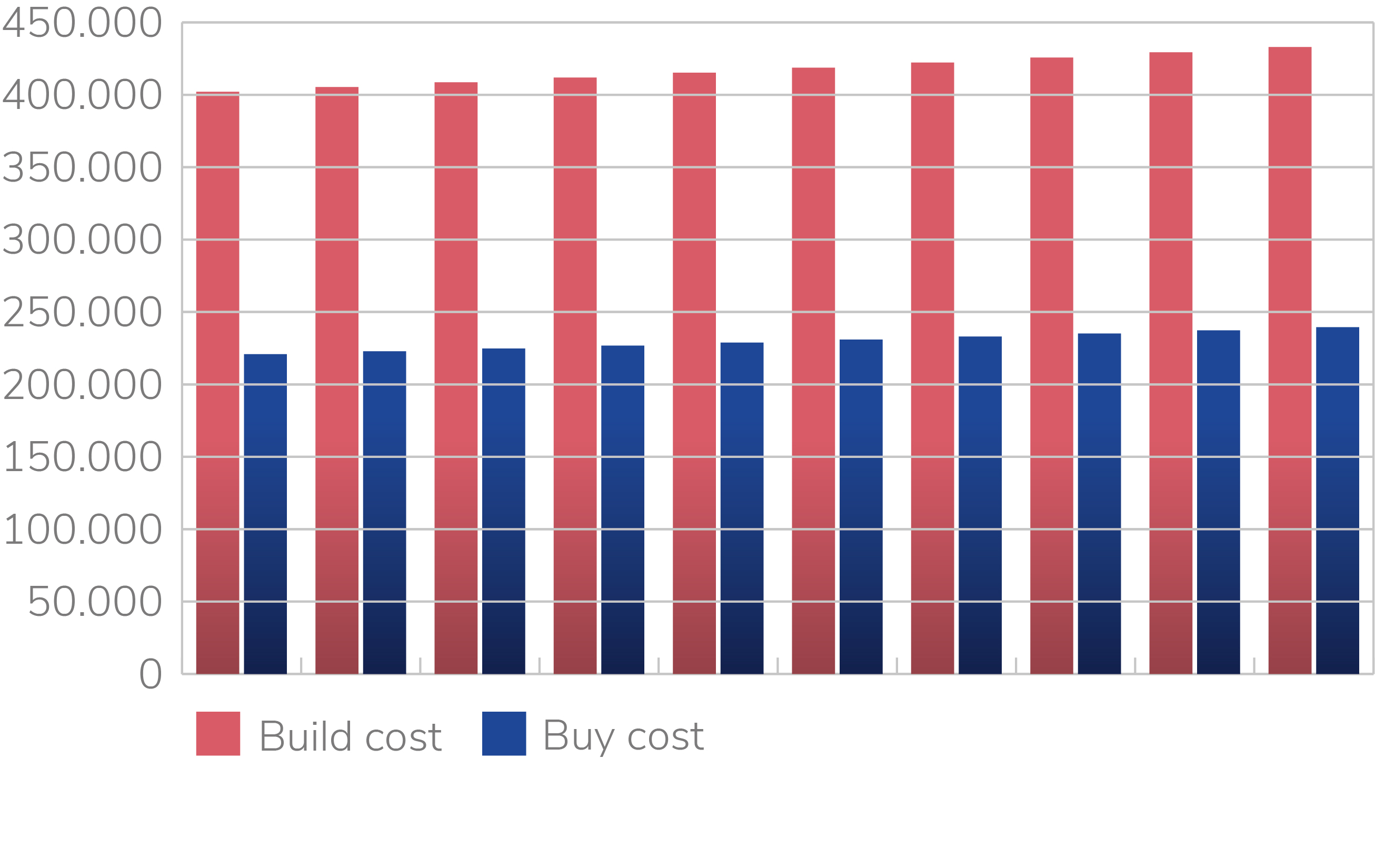In the growing data market, you are going to ask yourself at some point: am I set for the coming years with the IT infrastructure I have now? IDC predicts that the collective sum of the world’s data will grow from 33 zettabytes this year to a 175ZB by 2025, for a compounded annual growth rate of 61 percent[1]. Big chance you will need more storage soon. The next question is then: should this extra space be built or bought? The way I see it, there are just five key factors relevant to answering this question. Speaking is Steve De Craene, CFO at LCL Data Centers.
About a year and a half ago, a large international client came to us about the costs and benefits of each server hosting solution. They were in a conundrum because they needed to expand their data center and thought they had found the solution, namely a new location measuring 140 square metres – though they only needed about 70 in IT space and the remainder in storage – where they could build another data center from scratch. So what was the problem? After requesting a quote and crunching the numbers for the whole package ‒ connectivity, cooling, power, you name it – they soon realised the deal was much too costly and they could not get their internal management to sign off. They would need a third party to help them out with such a major capital outlay. That is when they came to us.
[1] IDC, the Digitization of the wold, from edge to core

Ask yourself this
When a potential client approaches us while they are still weighing their options to build an in-house data center, expand the one they already have or outsource it altogether, I ask them five questions:
Together, we look and see if, and to what extent, the client’s existing data center adds value to the business. In other words, does it pay to invest in their own IT room? It is safe to say that in most cases it doesn’t. Then we look at all the pros and cons of building and buying. We also establish how much they value peace of mind. Are they ready to manage a data center, update software, invest in hardware and deal with connectivity problems as well as upcoming issues surrounding the EU Green Deal and energy-neutral data centers. Usually, at this point in the conversation, the penny has already dropped. If their core business does not involve data storage or something similar, the outcome is always the same: it is wiser to outsource all IT infrastructure than to build it in-house. Still, the last factor ‒ the financial picture of building or buying ‒ is often decisive. This was certainly the case with the client who knocked on our door for advice.
Comparing costs in an instant
When they put their problem on LCL’s doorstep, we decided to work out three scenarios and map the costs. In the first scenario, they build their own data center at the new site; in the second, we build a data center there and lease part of it back to them; and in the third, they lease space at our current location.
To compare these situations and create cost transparency, I developed a tool known as the ‘build-or-buy tool’. Companies often lump together all overhead costs when, in fact, the overhead costs incurred for every square metre of a data center should be calculated separately. On top of that the initial capital investment and the subsequent maintenance capex for a qualitative IT room on premises are often underestimated. The build-or-buy tool covers all the main cost and investment items: maintenance, power, personnel and other overhead costs. Based on industry standards and four company variables (KW, SQM, FTE and the price of kWh), it takes just five minutes to get an idea of the financial impact on your business of either building or buying the entire IT infrastructure.
For our client, this insight sealed the deal. It was now clear at a glance that it would cost twice as much to build a data center as it would to lease the necessary storage space from LCL. We also offered the luxury of shopping at forty different carriers, in addition to the peace of mind that everything surrounding their data center, including any problems, would be taken care of by LCL. And what did we get out of it? Not only did we acquire a new happy client but we now also have an amazing tool that calculates, in an instant, the cost impact of either building or buying.
